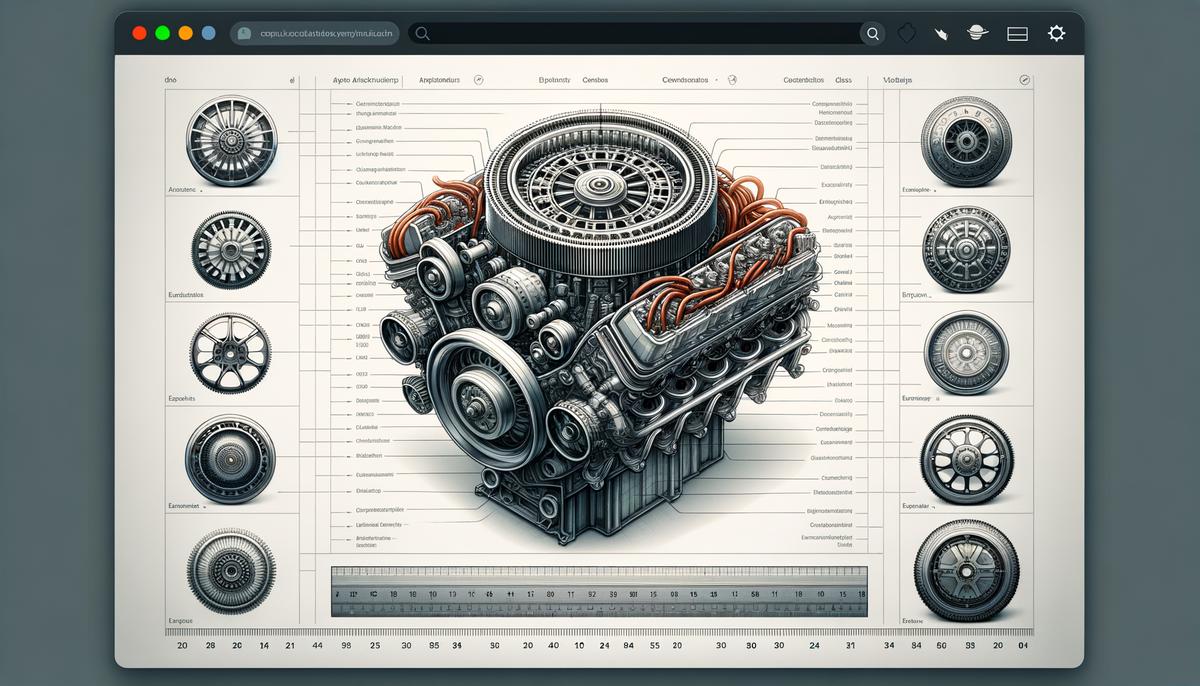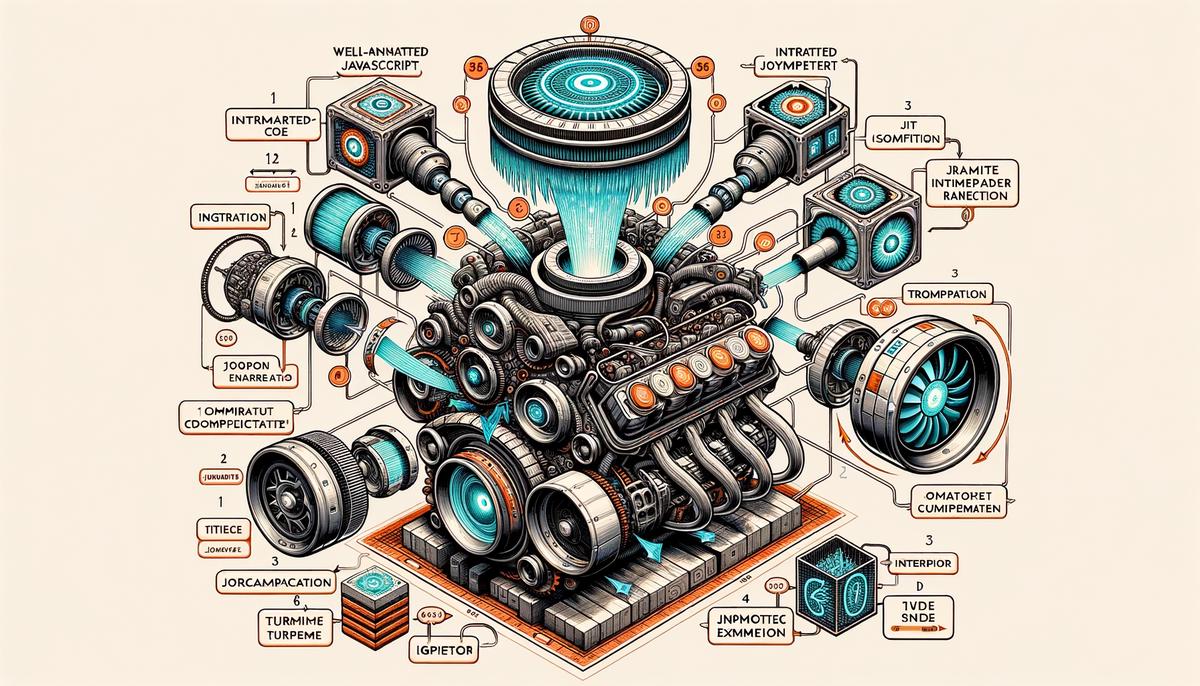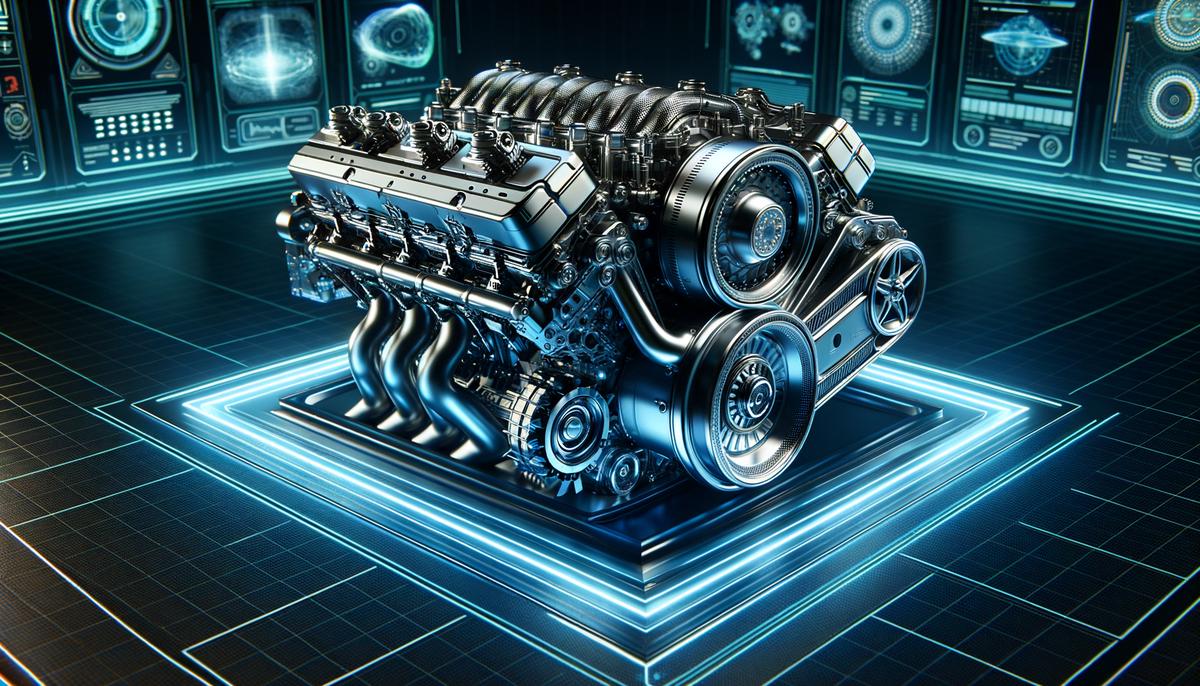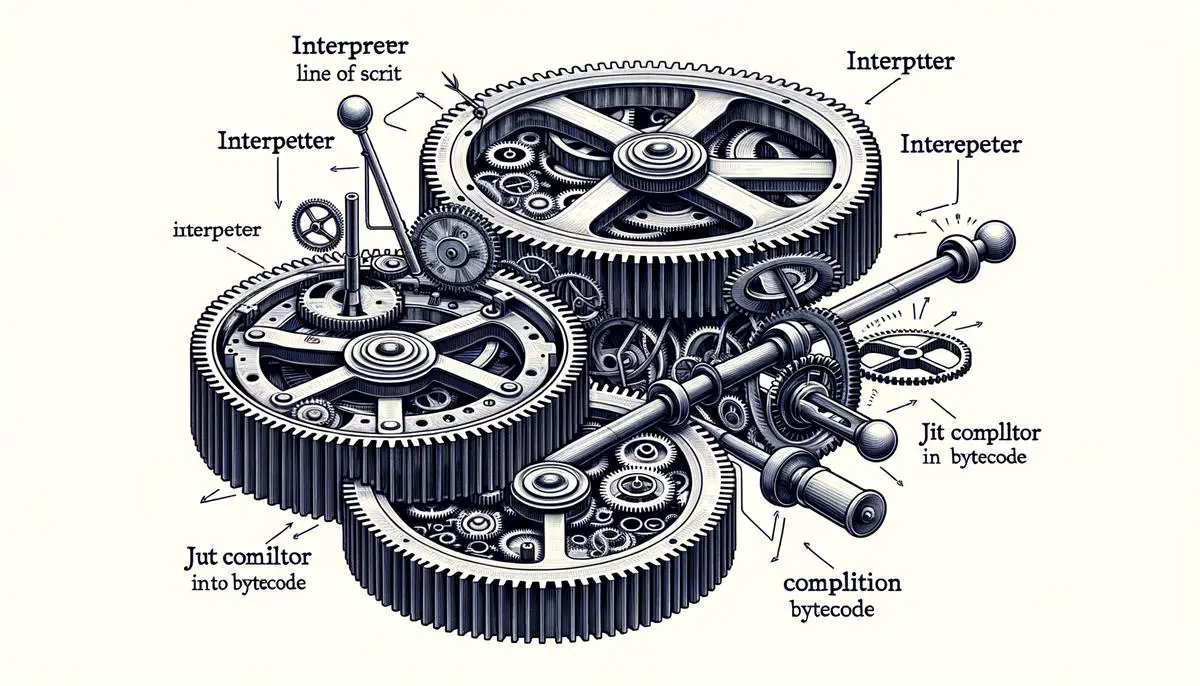Peering into the heart of the digital realm, we uncover the architecture of Google’s V8 engine, a cornerstone of modern web and server-side development. This complex yet elegantly designed system is the conductor that brings JavaScript to life, translating code into seamless execution. From the inner workings of its interpreters to the efficiency of its Just-In-Time (JIT) compiler, V8 is more than a mere cog in the machine—it’s a masterclass in computer science craftsmanship. As we unpack each component, we’ll see the meticulous optimization techniques that keep V8 at the forefront of performance—even as it faces the relentless evolution of web standards.
Architecture of V8 Engine
Understanding the Chrome V8 Engine’s Architecture
The Chrome V8 engine is a remarkable piece of software that plays a vital role in how we experience the web today. Developed by Google, V8 is an open-source JavaScript engine that powers not only the Chrome browser but also Node.js, a popular platform for server-side JavaScript execution. Now, let’s dive deep into the architectural structure of the V8 engine that makes it such an efficient and powerful tool for JavaScript execution.
At the heart of the V8 engine is its ability to translate JavaScript code, which is written in a human-readable form, into machine code, which computers understand. This process is known as Just-In-Time (JIT) compilation. V8 performs this task with remarkable efficiency thanks to its two distinct compilers: the full-codegen, which generates machine code quickly but doesn’t focus on optimization, and the Crankshaft, which takes more time to produce highly optimized code.
V8’s Crankshaft compiler optimizes code through several sophisticated techniques like hidden class transitions, inline caching, and an astute system of identifying hot spots in the code—sections that are executed frequently. This dynamic approach ensures that the engine spends more resources on optimizing code that directly impacts performance, rather than wasting time on rarely executed segments.
Another interesting aspect of V8’s architecture is its memory management mechanism, which efficiently handles allocation and garbage collection. JavaScript is known for its automatic memory management, meaning programmers don’t have to manually allocate and deallocate memory for their objects. V8 implements this through a generational garbage collection approach that is both fast and minimizes disruption to the program’s execution. Young objects, often short-lived, are frequently checked and cleared, while older objects are checked less often.
The engine also incorporates an event loop, which is fundamental to V8’s non-blocking input/output (I/O) operations, allowing JavaScript to perform multiple operations asynchronously. This is particularly important for Node.js users, where the efficiency of handling numerous I/O requests can make or break a server’s performance.
Behind the scenes, V8 leverages several optimizations such as ‘hidden classes’ to speed up object property access, and an optimizing compiler that creates highly optimized machine code for repeated executions. Moreover, the V8 engine is designed to be platform-independent, meaning it can be used across various devices and operating systems with only minor adjustments, making it incredibly versatile.
And let’s not forget about V8’s robust and flexible API, which provides developers with a treasure trove of features to access and manipulate JavaScript objects within their native C++ code. This paves the way for custom functionality and extensions, broadening the horizons for what the engine can do.
V8 is continually evolving, with Google’s engineers constantly refining its architecture to improve its speed, efficiency, and effectiveness at executing JavaScript code. Its structure is a testament to the innovation and foresight of its developers, making V8 an indispensable asset in the realm of web development and beyond.
The Chrome V8 engine, with its robust architecture and continual advancements, stands at the forefront of modern web technology, delivering swift and optimized JavaScript execution to users worldwide. Its layered complexity, starting from the two-compilers approach to its eloquent handling of memory management, cements its reputation as a top-tier engine that has consistently shaped how we interact with the web.

Performance Optimizations
The V8 engine, pivotal to Google’s Chrome browser, employs intricate strategies to deliver optimal JavaScript execution speeds. A critical element in this quest for efficiency is the ‘inline caching’ mechanism. Inline caching is a clever way to reduce the overhead of property access in JavaScript. When a script attempts to access a property of an object for the first time, V8 generates a hidden class for that object on-the-fly. Subsequent accesses check if the object belongs to the same hidden class and if so, property access can be fast-tracked.
Another significant performance tweak is the employment of ‘type feedback.’ V8 analyses code execution patterns, especially during the initial stages of script running. By keeping track of types used in different operations, V8 can predict types in similar contexts, streamlining the process when assumptions hold true. This prognostic capability allows V8 to forego certain checks and execute optimized code more frequently.
Function optimization is another area where V8 shines. When a function is identified as a ‘hotspot’—a function called multiple times—V8 transfers it to the TurboFan optimizing compiler. TurboFan takes the baton from Crankshaft for optimizing complex modern JavaScript, capable of intricate optimizations like software pipelining and instruction-level parallelism, enhancing performance for heavy computational tasks.
To bridge the notorious gap between dynamic JavaScript objects and the static expectations of machine code, V8 introduces ‘optimization hints.’ Developers can provide these hints to suggest likely scenarios of object usage, allowing V8 to pre-emptively streamline code paths.
V8’s adaptability extends to its handling of arrays. JavaScript arrays are heterogenous, posing a challenge for optimization. To overcome this, V8 interprets array operations by inspecting the elements’ types and employing ‘element kind’ transitions. This strategy enables efficient array processing by tailoring operations to the types of elements within, whether they are integers, doubles, or objects.
The astuteness of V8’s optimization processes is also evident in the ‘escape analysis’ it performs. This allows the identification of variables that do not escape the scope of a function. Such variables can be allocated on the stack instead of the heap, reducing garbage collection overhead and enhancing memory management.
Finally, V8’s ‘unoptimization’ capability is as critical as its optimization. When the engine’s assumptions based on type feedback are contradicted—due to dynamic typing, for instance—it gracefully steps back, “deoptimizing” the code. This rollback shifts execution to a less optimized but more versatile version of the code that can handle the unexpected types, ensuring that execution can continue correctly, albeit at a slightly reduced pace.
In harnessing these various algorithms and techniques, V8 achieves a compelling balance between high-speed execution and the dynamic, flexible nature of JavaScript—a balancing act that underpins the responsiveness and fluidity of modern web applications. Through this intricate mosaic of optimizations, V8 propels JavaScript execution into a realm of efficiency that was once the preserve of statically-typed, compiled languages, ensuring developers and users alike reap the performance benefits on the robust stage of the web.

Garbage Collection & Memory Management
Plug into the core of Google’s V8 engine, and you’ll stumble upon a well-oiled machine purring through the processes of memory management and garbage collection with finesse. At its heart, V8 doesn’t just run code; it’s a memory maestro, sculpting the RAM landscape for optimal performance.
Now, imagine the memory in V8 is like a bustling city. Just as a city has different neighborhoods for residents of various ages, V8 sorts its memory into neat parcels – new and old. The ‘young generation’ holds short-lived objects, akin to folks taking up temporary residence in the city. Over in the ‘old generation,’ you have objects that have stuck around through multiple clean-up cycles – they’re the long-term residents of the memory city.
Think of garbage collection like a city’s waste management system. V8’s approach is smart – it doesn’t let the trash pile up. Instead, it uses a tactic called ‘stop-the-world,’ where it briefly pauses all city activity to sweep through and whisk away the memory ‘rubble.’ It’s quick, though, more like a pitstop in a race rather than a lengthy halt.
For the young generation, V8 rolls out a garbage collection strategy known as ‘Scavenge.’ It’s nimble, focusing only on those fresh, short-lived memory spaces. Using a ‘copying’ method, the engine identifies the valuable items, shifts them to a safe spot, and clears out the rest. It’s akin to homeowners moving cherished possessions to a new home before the bulldozer comes in.
The old generation requires a finesse touch, taking on a more refined approach called ‘Mark-Sweep-Compact.’ Here, V8 first marks the objects that are active – marking their existence firmly in our city analogy. Then, it sweeps through, removing those unmarked as if wiping away dust from forgotten attic treasures. Finally, the compact phase shuffles the remaining items closer, ensuring that the memory city’s layout is logically ordered – there are no vacant lots causing unnecessary sprawl.
In this intricate dance of memory handling, V8 often faces a challenge: figuring out when an object is truly ready to be considered trash. It leverages a concept known as ‘reference counting,’ but with a twist. Since straightforward reference counting might miss objects that reference each other yet serve no purpose (a.k.a., circular references), V8 looks for objects that are no longer reachable from the root. If you can’t get to a house from any street or path, it’s time to say goodbye.
Real-time performance is the end goal, and V8 strikes a balance. It eagerly trims the memory fat with ‘incremental garbage collection,’ breaking down the cleaning process into bite-sized chunks. It’s like city workers cleaning streets block by block instead of cordoning off the entire area. This method keeps the wheels of our JavaScript metropolis turning smoothly, avoiding unwanted traffic jams in the system.
And what about those larger, changing objects that ebb and flow like the population of our hypothetical city? V8 confronts those with ‘large object space,’ setting aside room for the big players in memory. It’s like having an industrial zone, separate but essential for the city to function.
Finally, as our urban memory landscape continuously evolves, V8 ensures it recycles efficiently. It curates the flow of memory just as city planners would manage urban development – meticulously, purposefully, and always with an eye on performance. Through its robust garbage collection system, V8 proves time and again that it’s not just running scripts; it’s curating a harmonious ecosystem where JavaScript can thrive.

V8’s Role in Node.js
Inside Node.js: The Role of the V8 Engine
At the core of Node.js, a powerful software platform used for developing server-side and networking applications, lies the V8 engine designed by Google. Known for its remarkable speed and efficiency, the V8 engine is crucial in propelling JavaScript execution to new heights, ensuring applications run swiftly and smoothly.
Developed for Chrome, V8 is the secret sauce that enables Node.js to interpret and run JavaScript with blazing-fast speeds. It translates JavaScript, traditionally a browser-interpreted language, into native machine code. This process means Node.js applications don’t waste time on interpretation at runtime but can directly execute at full throttle.
Understanding V8’s memory management is akin to mastering the art of resourcefulness. The engine employs a clever system to sort the memory into two main categories: the young generation and the old generation. This separation facilitates efficient memory use and waste disposal—akin to segregating recyclables from organic waste.
The young generation houses the freshly minted variables. Being young, they live fast, but many don’t stick around long enough to make a lasting impact, akin to Sandcastles built by the shore—destined to wash away quickly. Therefore, the Scavenge garbage collection strategy is employed here, a strategy akin to a shoreline cleanup, swiftly and economically rounding up the ephemeral data.
In contrast, the old generation is where data that outlives the fleeting existence of the young generation retires. These veterans of the memory space require a more rigorous clean-up process: the Mark-Sweep-Compact garbage collection strategy. Here, data that still serves a purpose is marked and preserved, while the rest are swept away, compacting the remaining useful data and ensuring optimal memory use without unnecessary space.
Garbage collection in V8 isn’t merely a one-size-fits-all answer. It recognizes the complexities of JavaScript’s asynchronous nature and accordingly adjusts with an incremental approach that allows for what one might consider real-time performance. By intermittently pausing execution to clean up memory space, it ensures that the application remains responsive, almost as if the garbage collection is invisibly integrated into the system.
Circular references, where two or more objects are dependent on each other, once posed a daunting challenge for memory management—akin to a never-ending loop in a treasure hunt. However, V8 gracefully untangles these loops, making sure that even when objects hold references to each other, if they are no longer needed, they can be identified and recycled appropriately.
For the V8 engine, handling the heavyweight data—a task akin to moving furniture—is managed by the large object space, a dedicated area for managing larger objects which need to be operated on without causing disruption to the more regularly used smaller data pieces.
Above all, V8’s memory recycling is an exercise in sustainability. V8 excels at reusing previously allocated memory spaces, ensuring that an application’s memory footprint stays in check and doesn’t exceed what’s truly necessary. It’s equivalent to optimizing a pantry, making sure that space is constantly being used and rotated for optimal efficiency.
In sum, the V8 engine is akin to the high-performance heart beating inside the Node.js body, pumping out the power needed to keep applications running at peak performance. Its robust memory management systems, garbage collection strategies, and seamless integration of complex operations are why Node.js continues to be the go-to for developers demanding speed, efficiency, and reliability in their software.

V8 Engine’s Evolution
V8’s evolution is intertwined with the foundational elements of JavaScript performance, manifesting in
advanced optimization techniques. One such process at V8’s heart is “inlining,” a sophisticated method whereby
frequent function calls are replaced with their body content. This tweak shaves off precious milliseconds from
execution time, immense on a web scale.
But there’s more to the performance algorithms than just inlining. V8’s “compiler pipeline” refines JavaScript code at several stages. Imagine passing through security checkpoints—each refining your JavaScript code further for better performance.
The engine is also brilliantly preemptive. It anticipates object shapes using “hidden classes”—structures that map out the object properties, speeding up property access considerably. Think of them as blueprints, guiding the code for quick property retrieval, like having a master key for all doors in a building.
Additionally, V8 processes arrays with finesse. It adapts to different “element kinds.” Whether it’s packed integers or floating-point numbers, V8 adjusts its management strategy accordingly, ensuring arrays are handled as seamlessly as pouring water from a jug into a glass, tailor-fitting the container shape.
Now, consider a masterpiece painting—it’s not just the beauty you see but the layers of paint beneath. Similarly, V8’s magic includes “escape analysis,” a method to identify if an object can be safely tucked away in a processor’s register rather than in main memory. This is akin to a game of Tetris, carefully placing pieces for maximum impact, ensuring memory is used effectively without clutter.
But what if things go awry? Like an actor forgetting a line, JavaScript sometimes behaves unpredictably, prompting V8 to roll back optimizations through a process tactfully termed “deoptimization.” This is V8’s contingency plan, ensuring that even when the expected script goes off-course, the performance doesn’t plummet.
It’s a challenging equilibrium to maintain. JavaScript is a dynamic, constantly evolving language. So, V8 operates like a shrewd economist, balancing the need for rapid response with the ever-changing economic market of coding. It decides when to invest in optimization and when to withdraw, maintaining an equilibrium that safeguards speedy performance without becoming bogged down by the dynamic twists and turns of JavaScript’s versatile nature.
In the realm of server-side applications, where Node.js reigns, V8’s prowess underpins its efficiency. From translating JavaScript into machine code to memory management stratagems, V8 is the silent engine in Node.js’s hood, pushing it into the fast lane.
By merging such intricate, behind-the-scenes efforts, V8 underscores Google’s unyielding quest for web supremacy—a digital alchemist churning raw JavaScript into performance gold.

Future Directions of V8
The V8 engine, developed by Google, is highly regarded for its ability to enhance the performance of JavaScript in both web browsers and server-side applications like Node.js. It achieves this by converting JavaScript code into lightning-fast machine code before it is executed. However, this isn’t the end of the road for V8’s development; there are still many frontiers to be explored for this powerful engine.
One significant area of focus in the developmental horizon for V8 is improving parallel processing capabilities. With the advent of multi-core processors becoming the norm, the V8 team is constantly tweaking the engine to better leverage concurrent processing. This means refining the engine to manage tasks across multiple threads, aiming to reduce execution time and improve the efficiency of JavaScript code in multi-core environments.
Another cutting-edge development we can anticipate in V8 involves advancing its just-in-time (JIT) compilation strategies. JIT compilers are already incredibly fast, but Google’s constant quest for optimization may lead to the creation of more sophisticated algorithms that predict and compile the most efficient code paths even before they’re executed.
Furthermore, artificial intelligence and machine learning could play a pivotal role in the V8 engine’s future. With these technologies, V8 might predict application patterns, pre-optimize scripts, and intelligently cache data—a leap forward that could significantly enhance execution speed and resource management.
There’s also the considerable challenge of improving V8’s garbage collection. While it already employs advanced techniques for efficient memory management, there’s ongoing research into reducing pause times even further. Incremental and concurrent garbage collection strategies could evolve, minimizing disruption to the main execution thread and providing smoother performance for complex applications.
Security is an increasingly important aspect of all web technologies, and the V8 engine is no exception. Security enhancements to ward off potential exploits that could target the engine itself are continually being developed. These may include stronger sandboxing methods and improved isolation mechanisms, which are critical in a landscape where web applications are becoming increasingly sophisticated and targeted by complex threats.
Lastly, the V8 engine’s role as an open-source project suggests that its evolution will be shaped not just by Google’s internal team but also by the diverse community of developers around it. The collaborative nature of open-source development suggests that we’ll see innovative contributions that will push the boundaries of what V8—and JavaScript at large—can accomplish.
As this technology advances, we’re certain to witness V8’s influence grow further across the web, empowering a new generation of applications that are more dynamic, responsive, and capable than ever before. With its core strengths in speed, efficiency, and constantly evolving optimizations, V8 remains at the forefront of pushing the limits of what web technologies can do.

The intricate dance between V8 and the ever-growing JavaScript landscape testifies to the engine’s robust foundation and its commitment to innovation. Peering ahead, V8 stands on the precipice of the future, with each update potentially setting new benchmarks for performance and efficiency in the JavaScript ecosystem. And as web developers and Node.js enthusiasts keenly anticipate what’s next, one thing remains clear: the V8 engine will continue to be a pivotal force, driving the dynamism and capabilities of the web as we know it.
React Micro Frontend Module Federation Example
Micro Frontend Vue JS Example: How to Implement Micro Frontends with Vue JS




